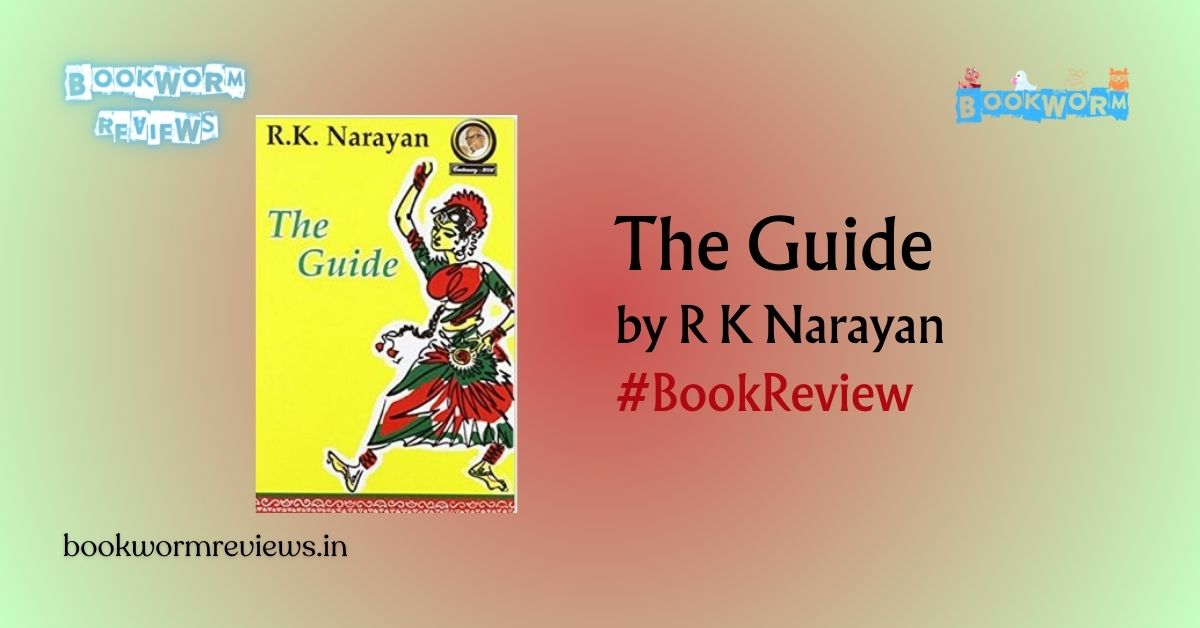R.K. Narayan’s “The Guide” is a timeless literary masterpiece that holds a prominent place in Indian English literature. First published in 1958, the novel explores the complexities of human aspirations, societal norms, and the quest for spiritual enlightenment. With profound insights into the human psyche and an astute portrayal of Indian culture, Narayan weaves a compelling narrative that resonates with readers even today. Though the target of this book review is anyone who takes an interest in reading literature, it can also serve the purposes of academics. This review delves into the thematic depth, character development, narrative structure, and cultural significance of “The Guide.”
Know the Author: Click here to read a detailed biography and critical commentary on the style of writing – R K Narayan
Plot Summary:
“The Guide” is set in the fictional town of Malgudi and follows the life of Raju, a charming and enigmatic man who transforms from a tour guide to a spiritual leader. The story oscillates between past and present, revealing Raju’s journey from his youthful escapades to his complex relationships with Rosie, a dancer, and Marco, her possessive husband. Raju’s life takes an unexpected turn when he becomes Rosie’s manager, leading to unforeseen consequences. Accused of forgery, he finds himself imprisoned, and it is within the confines of his cell that he embraces spirituality, eventually becoming a revered holy man. The novel explores themes of love, ambition, sacrifice, and the transformative power of spirituality.
Characterisation:
Narayan showcases his expertise in character development by presenting multidimensional, relatable individuals. Railway Raju, who is later referred to as Raju only, is the central figure around whom the narrative revolves, embodying both virtues and flaws that render him human and accessible. Rosie, a pivotal character, challenges societal norms and traditional gender roles, making her portrayal significant in its exploration of women’s agency. Marco, the husband of Rosie, has a complex characterisation which represents the pitfalls of unchecked ambition, while other supporting characters offer insight into the broader cultural context. The characters’ growth and internal conflicts contribute to the novel’s richness and relevance.
Narrative and Style:
“The Guide” employs a non-linear narrative that transitions seamlessly between the past and present, maintaining reader engagement while revealing crucial aspects of Raju’s life. Narayan’s writing style is marked by simplicity, yet it effectively conveys profound philosophical and psychological nuances. His use of vivid imagery and metaphors enhances the readers’ sensory experience, immersing them in the cultural milieu of Malgudi. The author’s masterful storytelling balances humour, irony, and moments of introspection, captivating readers and facilitating a deeper understanding of the characters’ motivations.
Themes and Cultural Significance:
Narayan artfully explores various thematic threads, including the conflict between personal desires and societal expectations, the intricacies of love and relationships, the transformative nature of spirituality, and the complexities of individual identity. The novel’s cultural significance lies in its depiction of traditional Indian society, critiquing its conservative elements while also portraying its inherent vibrancy and richness. Moreover, “The Guide” reflects the changing dynamics of post-independence India, making it a valuable socio-cultural commentary on the period.
Comparison with other notable (and similar) novels by Indian authors:
In the realm of Indian English literature, R.K. Narayan’s “The Guide” stands as a seminal work that has inspired and influenced subsequent generations of authors. When comparing this novel with other works by Indian writers, it becomes evident that “The Guide” possesses unique qualities that set it apart.
1. “Midnight’s Children” by Salman Rushdie: While both novels explore the theme of identity and cultural heritage, they do so in vastly different ways. “Midnight’s Children” employs magical realism to delve into the history of India, while “The Guide” takes a more grounded approach, focusing on the individual’s struggle for self-discovery. Rushdie’s prose is often exuberant and extravagant, and also superficial to a great extent, whereas Narayan’s writing maintains a simplicity and subtlety that allows for a deeper emotional connection with the characters.
2. “A Suitable Boy” by Vikram Seth: In contrast to the expansive and panoramic canvas of “A Suitable Boy,” “The Guide” is more intimate in its setting and character focus. Both novels touch upon themes of love, relationships, and societal expectations, but they do so within vastly different social milieus. Seth’s novel presents a multi-generational saga, while Narayan’s narrative centres on the transformation of a single protagonist. Moreover, “A Suitable Boy” tends to explore the political and social landscape of post-independence India, whereas “The Guide” delves into spiritual and philosophical themes. To conclude, “The Guide” connects with readers on many different fronts compared to the glimmer of “A Suitable Boy” which seldom finds a solid connection inviting readers into the world that Seth creates.
3. “The God of Small Things” by Arundhati Roy: Similar to “The Guide,” Roy’s novel deals with themes of love, social norms, and societal constraints. However, “The God of Small Things” incorporates more intricate (which becomes trapped in itself after some time) narrative techniques and fragile, experimental storytelling. Roy’s prose is rich and evocative, tending towards becoming elusive in the course of the novel, painting a vivid portrait of the Kerala setting, while Narayan’s language remains rooted in a simpler and more traditional style. The God of Small Things by Arundhati Roy goes away from readers as they start reading… and very few can reach a conclusion (which is not conclusive). However, The Guide by R K Narayan, on the other hand, begins, develops and ends perfectly – replicating a cyclic order of life – and keeps readers very much focused and ardently involved.
Conclusion:
In conclusion, “The Guide” by R.K. Narayan holds a distinct place among Indian literary classics due to its nuanced exploration of human nature, spirituality, and cultural dynamics. While sharing thematic concerns with other works by Indian authors, its unique narrative style, character development, and cultural context make it stand out in the landscape of Indian English literature. Each of the mentioned novels contributes to the vibrant tapestry of Indian literary tradition, and “The Guide” stands tall as a timeless and significant contribution to this literary heritage. Students of Indian literature will find great value in comparing and contrasting these works, gaining insights into the diverse voices and narratives that shape the Indian literary landscape. I hope this book review of R K Narayan’s important novel has been successful in its purpose. Do share it with your friends or anyone who may be interested in reading this review article.
By Ashish for BookWorm Reviews
The Guide by R K Narayan Book Review
- BookWorm Rating
Summary
A timeless novel… in its essence, The Guide by R K Narayan remains Indian… and it may stay the same forever. Always appealing to readers, whenever they read it, The Guide will be thought-provoking and also enlightening!




